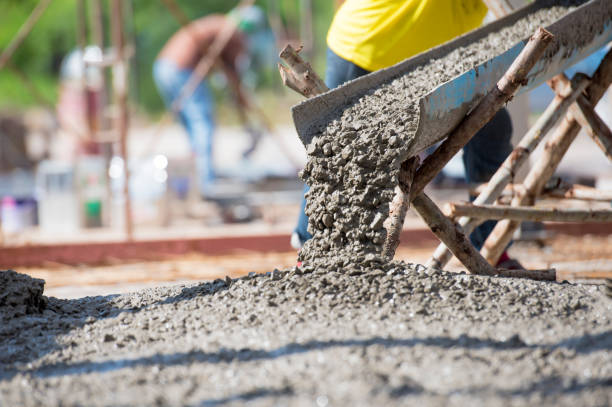Introduction
While the modern world relies heavily on cement, its production is a significant source of greenhouse gases. Therefore, finding ways to improve its durability and safety is essential.
Inspiration from Nature
A new study by Princeton University scientists found inspiration in the simple oyster and its iridescent nacre, also known as “mother of pearl.” By mimicking the microscopic structure of nacre, researchers were able to increase the hardness of cement by about 17 times compared to standard cement blocks.
Natural Materials for Stronger Cement
Scientists are always looking for ways to make naturally brittle materials, like concrete or ceramics, stronger, safer, and more durable. This time, they found inspiration in an unexpected place: the extremely durable shell of an oyster. Once again, nature provides solutions.
Understanding Nacre
One of the most famous features of these saltwater mollusks is the iridescent composite material nacre, which lines the inner shell layer of the animal. Though commonly found in jewelry stores worldwide, nacre is also an architectural marvel. It consists of microscopic hexagonal “tablets” made of aragonite (a common form of calcium carbonate), held together by a soft biopolymer, which acts like an organic glue. The aragonite provides strength, and the biopolymer offers flexibility, making nacre incredibly tough and crack-resistant.
Applying Nacre’s Structure to Cement
Inspired by the toughness of nacre, scientists at Princeton University wondered if this mollusk’s refined structure, developed over half a billion years, could benefit human construction materials. Their study results, published in the journal Advanced Functional Materials, suggest it could. Shashank Gupta, a graduate student at Princeton and co-author of the study, explained, “The synergy between hard and soft components is key to nacre’s remarkable mechanical properties. If we can engineer concrete to resist crack propagation, we can make it stronger, safer, and more durable.”
Experimenting with Multi-Layered Beams
To achieve this goal, Gupta’s team created three types of multi-layered beams made from alternating layers of cement paste sheets and a thin polymer layer. The first beam consisted of these two materials stacked on top of each other. The other two beams were slightly different: one had hexagonal grooves in the cement paste, while the other had the cement completely cut into hexagonal “tablets.” All three beams were compared to a reference beam of cast cement paste (without any polymer layer or hexagonal markings).
Results
The experiments showed that while the reference beam was brittle with no flexibility, all three multi-layered beams displayed significant flexibility and hardness. The most remarkable beam was the one with hexagonal plates resembling nacre. Mimicking nacre’s mechanics at a microscopic level, this beam provided 17 times more hardness and 19 times more flexibility than cast cement, while maintaining the same strength as the reference beam.
Learning from Nature
“Our bio-inspired approach is not just about mimicking nature’s microstructure but learning from its underlying principles to inform the engineering of human-made materials,” said study co-author Reza Moini. “One key mechanism that makes nacre shells tough is the sliding of tablets at the nanometer level. In other words, we deliberately engineer flaws in brittle materials to make them stronger by design.”
Conclusion
Stronger and safer cement would benefit construction and the planet’s health, as cement production accounts for about 8 percent of global greenhouse gas emissions. Although the study showed promising results for these nacre-inspired materials, more refinement is needed in this multi-layered, hexagonal-plated technology before construction companies can replace traditional mortar with mollusk-inspired solutions.



